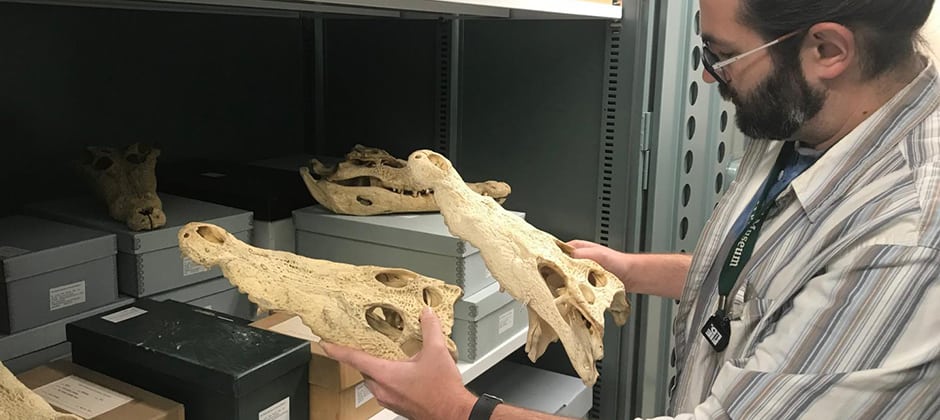Share this article
Scientists discover new 10-foot croc species in museum
A giant new crocodile species has seemingly jumped out of nowhere as researchers took a closer look at museum specimens and living reptiles at a Florida zoo. Now deceased biologist Philip Hall first noticed some important differences in the way that some groups of New Guinea crocodiles, first described by researchers in 1928, nested and mated. While he died before he could finish his investigation, Chris Murray, an assistant professor at Southeastern Louisiana University, and Caleb McMahan, a scientist at the Field Museum of Natural History in Chicago, picked up his work where he left off, examining 90-year old skulls in museums and examining living crocs at the St. Augustine Alligator Farm Zoological Park in Florida. They determined that there were, indeed, two distinct species, and named the new one Crocodylus halli after Hall. “The nice thing is that here we’ve got differences in the morphology, we’ve got ecological differences, they’re separated by a mountain range, I think the synthesis of all of that is what really builds the case that these two crocodile entities are very different from each other,” McMahan said.
Header Image: Senior author Caleb McMahan examines crocodile skulls in the Field Museum's collections. The one in his left hand is C. novaguinea, and the one in his right is the new species, C. halli. ©Kate Golembiewski, Field Museum








